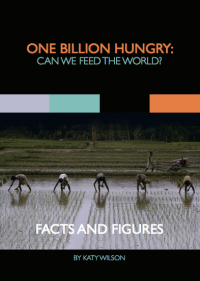 Alongside the recent release of the UN IPCC Fifth Assessment Report, a new study, published in Nature, provides evidence that global increases in temperature of only 2°C will reduce crop yields in temperate and tropical regions from the 2030s onward.
Alongside the recent release of the UN IPCC Fifth Assessment Report, a new study, published in Nature, provides evidence that global increases in temperature of only 2°C will reduce crop yields in temperate and tropical regions from the 2030s onward.
The meta-analysis, collated and analysed by researchers at the University of Leeds, combined 1,700 published data sets for wheat, rice and maize, the largest dataset on crop responses to climate change yet. The research, taking into account currently practiced adaptation activities such as changing planting dates and using improved varieties, as well as uncertainty and the timing of impacts, found that the variability between crop yields in different places and at different times is also likely to increase with climate change, which could have a profound impact on the security of food supply.
Beyond 2050 declines in crop yields will be greater in magnitude, reductions of 25% are expected to be widespread with median crop yields to drop by 2% each decade for the rest of the century. Although crop productivity has previously been predicted to improve in Northern Europe, crop yields even under moderate future warming may decline in many places. Coupled with increasing demand for food (expected to increase 14% per decade until 2050), future food security without significant intervention looks bleak.
The clear message from the paper and the IPCC Fifth Assessment Report is the urgent need for farmers to adapt to a changing climate and for all countries to seriously engage in mitigating climate change. The UN Food and Agriculture Organisation recently released figures showing that greenhouse gas emissions from the agricultural, forestry and fisheries sector have doubled over the last 50 years and could grow by over 30% by 2050. The majority of this increase is being seen in developing countries, with the expansion of agricultural production.
Between 2001 and 2010 emissions from crop and livestock agriculture increased 14% while emissions from land use change and deforestation declined 10%, yet more evidence that agriculture needs to be part of climate discussions. Within agriculture, enteric fermentation (methane from livestock) accounts for the largest proportion of emissions (39%) and increased 11% between 2001 and 2010. The FAO, in 2012, launched the FAOSTAT emissions database, which details the GHG emissions of agriculture, forestry and other land use activities.
With crop yields expected to decline (and already declining in many countries) and agricultural emissions appearing to be on an upwards trajectory, the former perhaps incentivising the latter, we need smarter agriculture, that is resilient to future climate change while also reducing GHG emissions, the very goal of sustainable intensification.
 A recent paper in the Proceedings of the National Academy of Sciences, Climate change mitigation through livestock system transitions, discusses how climate mitigation policies can reduce emissions from the livestock sector. Authors identify much potential to mitigate climate change in livestock production systems, namely the transition from extensive to more productive systems, reducing the livestock sector’s impact on land use change. The paper also recommends emissions reductions should be targeted to the supply (rather than demand) side. Aside from this rather controversial recommendation, this paper, as with many others, identifies significant opportunities to mitigate climate change and increase food supply within the agricultural sector. Serious action on implementing the variety of adaptation and mitigation strategies at the global and local level appears to be the limiting factor in progress.
A recent paper in the Proceedings of the National Academy of Sciences, Climate change mitigation through livestock system transitions, discusses how climate mitigation policies can reduce emissions from the livestock sector. Authors identify much potential to mitigate climate change in livestock production systems, namely the transition from extensive to more productive systems, reducing the livestock sector’s impact on land use change. The paper also recommends emissions reductions should be targeted to the supply (rather than demand) side. Aside from this rather controversial recommendation, this paper, as with many others, identifies significant opportunities to mitigate climate change and increase food supply within the agricultural sector. Serious action on implementing the variety of adaptation and mitigation strategies at the global and local level appears to be the limiting factor in progress.













